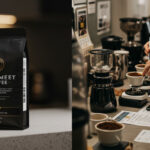
The Evolution of Brewing Methods Over Decades: A Coffee Journey
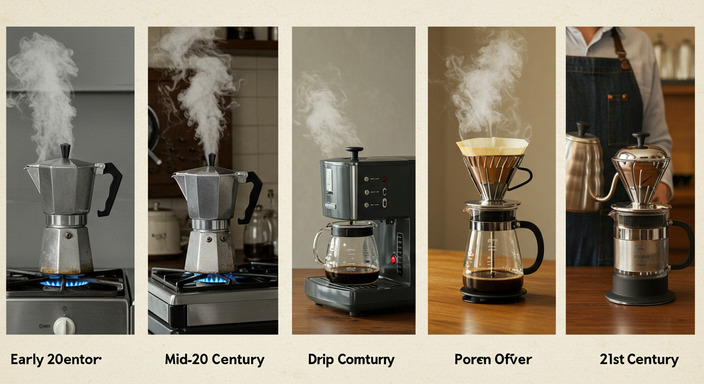
Table of Contents
ToggleThe Early Days of Coffee Brewing
The Rise of Percolators in the 1900s
In the early 20th century, the percolator became a household staple, transforming the way Americans brewed their coffee. This ingenious device, with its bubbling mechanism and distinctive aroma, brought a sense of ritual to the morning routine. The percolator’s design allowed water to cycle through coffee grounds repeatedly, creating a robust and deeply flavored brew. For many families, the sound of the percolator gurgling on the stovetop signaled the start of a new day, a comforting reminder of life’s simple pleasures.
Stovetop Brewing and Its Cultural Impact
As the percolator gained popularity, stovetop brewing became more than just a method—it became a cultural phenomenon. Diners, roadside cafes, and family kitchens alike embraced this technique, making it a cornerstone of American coffee culture. The stovetop percolator was not only practical but also deeply symbolic, representing warmth, togetherness, and tradition. It was during this era that coffee began to solidify its place as a daily ritual, a beverage that brought people together and fueled conversations, creativity, and connection.
- Convenience: Easy to use and maintain, the percolator became a favorite for busy households.
- Flavor: Its brewing process extracted rich, bold flavors that became synonymous with classic coffee.
- Heritage: Many families passed down their percolators as cherished heirlooms, keeping traditions alive.
“The percolator didn’t just brew coffee—it brewed memories, one cup at a time.”
These early brewing methods laid the foundation for the coffee culture we know today, reminding us of the enduring appeal of a well-made cup of coffee. Whether it was the percolator’s rhythmic bubbling or the communal joy of sharing a pot, these traditions continue to inspire a sense of nostalgia and connection among coffee lovers.
Drip Coffee and the Mid-Century Boom
The Invention of Automatic Drip Coffee Makers
In the mid-20th century, the way Americans brewed their coffee underwent a quiet revolution. The invention of the automatic drip coffee maker in the 1950s transformed the home brewing experience, making it faster, cleaner, and more accessible than ever before. Gone were the days of laborious percolators and stovetop methods. Instead, the drip coffee maker allowed anyone to achieve a consistent, flavorful brew with just the push of a button.
This innovation was powered by the rise of household appliances in post-war America, as families embraced modern conveniences. Brands like Mr. Coffee and Sunbeam became household names, and the ritual of brewing coffee at home was forever changed. The automation of coffee-making not only saved time but also democratized the process, allowing more people to enjoy a café-quality cup in the comfort of their kitchens.
Diners and the American Coffee Ritual
While home brewing was evolving, the American diner became a cultural icon of the mid-20th century, and coffee was at the heart of the experience. Diners were more than just places to eat; they were social hubs where people gathered to share stories, ideas, and, of course, bottomless cups of drip coffee. The diner counter became a symbol of community, and the act of pouring coffee—refill after refill—was a gesture of warmth and hospitality.
Diners popularized the concept of coffee as a daily ritual, whether it was a quick morning pick-me-up or a late-night conversation over a steaming mug. The simplicity of diner-style coffee—brewed strong and served black or with a splash of cream—resonated with Americans from all walks of life. It was a beverage that fit seamlessly into the rhythm of everyday life, embodying both practicality and comfort.
The Rise of the American Coffee Culture
The mid-century boom in drip coffee wasn’t just about technology or convenience; it was a reflection of a growing appreciation for coffee as an essential part of American culture. From bustling city diners to quiet suburban kitchens, coffee became a unifying force. It was a drink that transcended generations, with parents passing down their love for it to their children, along with cherished brewing traditions.
This era laid the foundation for the modern coffee culture we know today. It celebrated the simplicity of a well-brewed cup, the joy of shared moments, and the enduring appeal of a beverage that has stood the test of time. Whether it was brewed at home or sipped in a diner, drip coffee became a symbol of connection, comfort, and the American way of life.
The French Press Renaissance
Origins of the French Press
The French press, or cafetière à piston, traces its roots back to 19th-century France, where it was patented by Attilio Calimani in 1929. Its design, simple yet ingenious, consists of a cylindrical glass or stainless steel container, a plunger, and a mesh filter. This method was revolutionary for its time, allowing coffee lovers to brew a full-bodied cup without the need for complex machinery. Its elegance lies in its simplicity—just coffee grounds, hot water, and a gentle press.
A Revival of Tradition
In the mid-20th century, the French press saw a decline in popularity as automatic drip coffee makers took center stage. However, in recent decades, it has experienced a remarkable resurgence, fueled by a growing appreciation for artisanal coffee and the desire to slow down and savor the process. Coffee enthusiasts have rediscovered the French press as a way to connect with the ritual of brewing, a practice that feels both nostalgic and deeply satisfying.
Why the French Press Endures
What makes the French press a beloved brewing method even today? Its charm lies in its ability to deliver a rich, full-flavored cup of coffee that captures the essence of the beans. Unlike paper filters, the mesh screen allows natural oils and fine particles to remain in the brew, creating a texture and depth that other methods can’t replicate. It’s also incredibly versatile—equally at home in a cozy kitchen, a rustic cabin, or a bustling campsite.
Beyond its practicality, the French press embodies a sense of ritual. The act of measuring the grounds, pouring the water, and waiting for the perfect brew is a moment of mindfulness in an otherwise hurried world. It’s a reminder that some of life’s greatest pleasures are found in the simplest of acts.
“The French press isn’t just a way to make coffee—it’s a way to make memories.”
For many, the French press is more than a tool; it’s a symbol of connection. Whether it’s a quiet morning alone or a shared pot with friends, it fosters moments of togetherness and reflection. Its timeless design and enduring appeal ensure that it will remain a cherished part of coffee culture for generations to come.
Espresso Machines and Italian Influence
The Arrival of Espresso in the U.S.
In the mid-20th century, espresso made its way across the Atlantic, bringing with it a piece of Italian culture that would forever change the American coffee landscape. The first espresso machines arrived in the U.S. in the 1920s, but it wasn’t until the post-World War II era that they began to gain traction. Italian immigrants, nostalgic for the rich, concentrated coffee of their homeland, introduced Americans to the art of espresso brewing. Cafés in cities like New York and San Francisco became hubs for this new coffee experience, offering a taste of Italy in every sip.
How Espresso Transformed Coffee Culture
Espresso didn’t just introduce a new way to brew coffee—it sparked a cultural shift. The speed and intensity of espresso appealed to the fast-paced American lifestyle, while its bold flavor captivated those seeking something beyond traditional drip coffee. Espresso machines became symbols of sophistication, and the ritual of pulling a shot became a performance in itself. This innovation paved the way for the rise of specialty coffee shops, where baristas honed their craft and customers gathered to savor the experience.
Espresso also inspired a wave of creativity in coffee drinks. Classics like the cappuccino, latte, and macchiato emerged, blending espresso with steamed milk and foam to create a variety of textures and flavors. These drinks became staples in American coffee culture, offering something for every palate.
“Espresso is not just a drink; it’s a moment of pause, a connection to tradition, and a celebration of craftsmanship.”
Today, espresso remains a cornerstone of coffee culture, bridging the gap between old-world traditions and modern innovation. Its influence can be seen in everything from the corner café to the high-tech espresso machines in our homes, reminding us of the enduring power of a simple, well-brewed cup of coffee.
The Pour-Over Revival
The Return to Manual Brewing
In the early 2000s, as the coffee world became increasingly dominated by espresso machines and automated drip systems, a quiet revolution began to brew. Coffee enthusiasts started turning back to manual brewing methods, and among them, pour-over coffee emerged as a favorite. This resurgence wasn’t about rejecting modernity but about reclaiming the artistry and intimacy of crafting coffee by hand. For many, it was a return to simplicity—a way to slow down and savor the process as much as the result.
Pour-over brewing, once a forgotten relic of the early 20th century, found its place in specialty coffee shops and home kitchens alike. Tools like the Hario V60 and Chemex became symbols of a new appreciation for precision and patience. It wasn’t just about making coffee; it was about connecting with it.
Why Pour-Over Appeals to Coffee Purists
For coffee purists, pour-over brewing is more than a method—it’s a philosophy. It allows for complete control over every variable, from water temperature to pour speed, ensuring that each cup is a true reflection of the beans’ character. The process is meditative, requiring focus and care, which many find rewarding in a fast-paced world.
Here’s what makes pour-over so special:
- Clarity of Flavor: The slow, even extraction highlights the nuanced notes of the coffee, from floral hints to fruity undertones.
- Customization: Every step is adjustable, letting brewers tailor the cup to their exact preferences.
- Ritual: The hands-on approach fosters a deeper appreciation for the craft, turning a daily routine into a moment of mindfulness.
As one coffee enthusiast put it, “Pour-over isn’t just brewing coffee—it’s a conversation with the beans.” This sentiment captures the essence of why pour-over has become a beloved ritual for so many, offering a way to celebrate the timeless art of coffee-making.
Cold Brew and Modern Innovations
The Rise of Cold Brew in the 2010s
In the 2010s, a quiet revolution began to ripple through the coffee world, one that didn’t require heat or haste. Cold brew, a method that had been quietly brewing for centuries in places like Japan and Latin America, suddenly took center stage in the U.S. Its smooth, less acidic profile and refreshing qualities made it a favorite among coffee lovers, especially during the warmer months. Unlike traditional iced coffee, which is brewed hot and then cooled, cold brew is steeped in cold water for 12 to 24 hours, extracting a rich, mellow flavor that feels like a luxurious departure from the norm. Cafés and coffee shops across the country began to showcase their own unique takes on the drink, from nitro cold brew with its creamy cascade to flavored variations that added a modern twist.
This wasn’t just a trend; it was a reflection of how coffee continued to evolve to meet the tastes and lifestyles of a new generation. Cold brew became a symbol of innovation, a reminder that coffee didn’t always have to be hot or hurried to be deeply satisfying.
How Technology Shapes Brewing Today
Technology has always played a role in shaping how we brew and enjoy coffee, but in recent years, it has accelerated to unprecedented levels. From precision-engineered espresso machines to smart coffee makers that can be controlled via smartphone, the tools we use to make coffee have become as sophisticated as the craft itself. Innovations like grinders with exact particle size control and water temperature regulation ensure that every cup is as perfect as possible, catering to the growing demand for quality and consistency.
At the same time, technology has also made brewing more accessible. Pod-based systems and single-serve machines have brought specialty coffee into homes without requiring years of barista training. Apps and online platforms have democratized knowledge, teaching enthusiasts about everything from bean origins to brewing techniques. Even the humble French press has been reimagined with insulated designs and easier-to-use filters.
But perhaps the most exciting development is how technology has connected coffee lovers around the world. Online communities share recipes, brewing tips, and even bean subscriptions, fostering a global appreciation for the art of coffee. It’s a testament to how, even in a fast-paced digital age, coffee remains a shared experience that brings people together.
Coffee Brewing Today: A Blend of Old and New
In the ever-evolving world of coffee, one thing remains constant: the enduring allure of traditional brewing methods. Modern coffee culture, with its sleek espresso machines and cutting-edge gadgets, owes much to the timeless techniques of the past. Today, we see a beautiful marriage of old and new, where vintage methods inspire contemporary innovations, creating a coffee experience that is both nostalgic and forward-thinking.
How Traditional Methods Inspire Modern Coffee
From the humble French press to the intricate rituals of the pour-over, traditional brewing methods have become the foundation of modern coffee artistry. These time-tested techniques emphasize simplicity, craftsmanship, and the pure essence of coffee. Baristas and enthusiasts alike draw inspiration from these methods, adapting them to suit modern tastes while staying true to their roots.
For instance, the resurgence of the manual pour-over showcases how slow, deliberate brewing can elevate the coffee experience. Similarly, the cold brew trend, which has taken the coffee world by storm, owes its origins to centuries-old practices of steeping coffee grounds in cold water for extended periods. These modern interpretations pay homage to the past while embracing the convenience and creativity of the present.
The Enduring Appeal of Timeless Brewing Techniques
Why do traditional methods continue to captivate coffee lovers? The answer lies in their simplicity and the emotional connection they foster. There’s something deeply satisfying about the ritual of brewing coffee by hand—whether it’s the rhythmic motion of a pour-over or the anticipation of steeping in a French press. These methods remind us to slow down and savor the moment, a stark contrast to the fast-paced world we live in.
Moreover, traditional brewing techniques often highlight the natural flavors of the coffee bean, allowing its unique characteristics to shine. This authenticity resonates with those who appreciate the artistry and history behind their daily cup. It’s no wonder that many coffee drinkers return to these methods, finding comfort in their reliability and the sense of connection they provide.
FAQs About Coffee Brewing Today
Q: Are traditional brewing methods still relevant in today’s coffee culture?
A: Absolutely! Traditional methods like the French press, pour-over, and Moka pot remain popular for their simplicity and ability to produce rich, flavorful coffee. They inspire modern techniques and are cherished for their timeless appeal.
Q: Can I use traditional methods with specialty coffee beans?
A: Yes, traditional brewing methods are perfect for specialty coffee. They allow the unique flavors and aromas of high-quality beans to fully develop, offering a truly exceptional coffee experience.
Q: What makes traditional brewing different from modern methods?
A: Traditional brewing often involves manual, hands-on techniques that emphasize patience and precision. Modern methods, while efficient, sometimes prioritize speed and convenience. Both have their place, but traditional methods offer a deeper connection to the coffee-making process.
Rationing and Its Impact on Civilian Coffee Consumption
Back on the home front, coffee was a precious commodity. The U.S. government implemented strict rationing to ensure that soldiers had ample supplies, leaving civilians to make do with less. Families learned to stretch their coffee grounds, reusing them multiple times or blending them with substitutes like chicory or roasted grains. This scarcity transformed coffee into a symbol of sacrifice and resilience, as Americans adapted to wartime shortages while still finding ways to enjoy their beloved brew.
The Rise of Instant Coffee for Practicality
World War II also marked a turning point in the way coffee was consumed. Instant coffee, once a novelty, gained widespread popularity due to its convenience and long shelf life. Soldiers could quickly prepare a cup with just hot water, making it an ideal choice for the battlefield. This innovation not only met the practical needs of the military but also paved the way for a new era of coffee consumption. After the war, instant coffee became a staple in American households, forever changing the coffee landscape.
Coffee on the Home Front
Adapting to Coffee Shortages
During World War II, coffee became a precious commodity. With overseas shipments disrupted by the war, rationing was imposed, limiting families to just one pound of coffee every five weeks. This scarcity forced households to get creative, stretching their supply and finding ways to make every bean count. Powdered milk was often added to dilute the brew, and some even reused coffee grounds multiple times to savor the flavor. The daily ritual of coffee became a lesson in resourcefulness, as families learned to cherish every cup.
Creative Recipes and Substitutes
As coffee shortages persisted, inventive recipes and substitutes emerged. People turned to alternatives like chicory root, roasted grains, and even acorns to mimic the familiar taste of coffee. Recipes for “mock coffee” became popular, blending roasted ingredients to create a comforting, albeit unconventional, beverage. Here’s a glimpse of one such recipe:
- Roast barley or wheat until dark and fragrant.
- Grind the grains into a coarse powder.
- Brew as you would regular coffee, adding a pinch of cinnamon or nutmeg for flavor.
While these substitutes couldn’t fully replicate the real thing, they carried a sense of warmth and nostalgia that kept coffee traditions alive.
The Cultural Significance of Coffee
Coffee has long been more than just a drink—it’s a cultural cornerstone in American households. During the war, it symbolized normalcy and comfort amidst uncertainty. Families gathered around the kitchen table, sharing stories and sipping their carefully rationed brew. Coffee became a way to connect, to pause, and to find joy in the simple moments. Its aroma filled homes with a sense of familiarity, reminding everyone of the enduring strength of community and tradition.
Coffee in the Military
The Importance of Coffee in Military Rations
During World War II, coffee was more than just a beverage—it was a lifeline for soldiers. Packed into their rations, coffee became a symbol of comfort and normalcy amidst the chaos of war. The caffeine provided much-needed energy for long marches and sleepless nights, while the act of brewing and drinking it offered a fleeting moment of calm. Instant coffee, a relatively new invention at the time, became a staple for its convenience and ability to withstand the rigors of combat.
For many soldiers, coffee was a reminder of home. Whether it was the aroma of a freshly brewed pot or the familiar taste of a strong cup, it connected them to the lives they had left behind. Armies recognized its psychological impact, ensuring it remained a constant in their supplies. Coffee was not just a drink—it was a morale booster.
Stories of Soldiers Sharing Coffee in the Trenches
In the trenches and barracks, coffee became a shared ritual that brought soldiers together. Stories abound of troops huddling around a makeshift stove, passing a single cup of coffee among themselves. These moments of camaraderie were brief but significant, offering a sense of unity and humanity in the midst of hardship.
One soldier recounted how a sergeant once insisted on sharing his last packet of coffee with his squad, saying,
“If we’re going to fight together, we’re going to drink together.”
Such tales highlight how coffee transcended its role as a beverage, becoming a gesture of solidarity and mutual support.
How Coffee Fostered Camaraderie and Resilience
Beyond its physical benefits, coffee played a crucial role in fostering resilience among troops. The act of brewing and sharing it created small pockets of normalcy, allowing soldiers to momentarily escape the horrors of war. These coffee breaks became a time for storytelling, laughter, and bonding—a reminder that they were not alone.
For many, the routine of making coffee—whether over a campfire or a portable stove—provided a sense of purpose and structure. It was a simple yet powerful way to maintain mental fortitude. In a world turned upside down, coffee was a constant, a small comfort that kept spirits high and bonds strong.
The Legacy of WWII Coffee Culture
The Post-War Boom in Coffee Consumption
As the world emerged from the shadows of World War II, coffee became a symbol of normalcy and comfort. The post-war era saw a dramatic surge in coffee consumption, fueled by returning soldiers who had developed a taste for the beverage during their service. Coffee was no longer just a morning ritual; it became a cornerstone of social gatherings, family meals, and workplace breaks. The rise of diners and coffee shops across America further cemented its place in everyday life, offering a warm cup of joe to anyone seeking solace or connection.
How WWII Shaped Modern Coffee Habits
World War II didn’t just increase coffee consumption—it transformed how we drink it. The war introduced innovations like instant coffee, which became a staple in households for its convenience. Soldiers’ reliance on coffee for energy and morale carried over into civilian life, making it a non-negotiable part of the daily routine. The war also popularized the idea of coffee as a communal experience, a tradition that lives on in today’s coffee culture. From office coffee breaks to weekend brunches, the habits formed during WWII continue to shape how we enjoy coffee today.
The Enduring Nostalgia for Wartime Coffee Traditions
There’s a certain charm in the simplicity of wartime coffee traditions that still resonates with many. The nostalgia for a time when coffee was a humble yet cherished indulgence has inspired a renewed appreciation for classic brewing methods and unpretentious coffee experiences. Whether it’s the ritual of percolating coffee on a stovetop or the comforting aroma of a freshly brewed pot, these traditions remind us of coffee’s enduring ability to bring people together. For many, the legacy of WWII coffee culture is not just about the drink itself but the memories and connections it fosters.
Coffee as a Symbol of Hope
A Comfort in Uncertain Times
During World War II, coffee was more than just a beverage—it was a lifeline. In a world turned upside down by war, the simple act of brewing and savoring a cup of coffee provided a sense of normalcy and comfort. For soldiers on the frontlines, a warm cup of coffee was a rare but cherished reminder of home. For families on the homefront, sharing a pot of coffee became a ritual of togetherness, a moment to pause and find solace amidst the chaos. In times of hardship, coffee was a small but powerful symbol of hope and resilience.
The Emotional Connection to Coffee
Coffee’s role during WWII was deeply emotional. It wasn’t just about the caffeine; it was about the sense of connection it fostered. Families gathered around the kitchen table, soldiers traded stories over shared cups, and communities rallied around the simple pleasure of a good brew. Coffee became a universal language of comfort, transcending borders and uniting people in the shared experience of finding light in the darkest of times. As one WWII soldier famously wrote in a letter home:
“A cup of coffee feels like a piece of home, no matter where I am.”
Why Coffee Remains a Timeless Tradition Today
Even decades after the war, the legacy of coffee as a symbol of hope endures. Its ability to bring people together, to comfort and inspire, is as relevant today as it was in the 1940s. Whether it’s the first sip of a morning brew, a leisurely cup shared with loved ones, or the quiet moments of reflection it fosters, coffee continues to be a cornerstone of daily life. Its rich history during WWII reminds us that even the simplest pleasures can carry profound meaning.
FAQs About Coffee During WWII
- Why was coffee rationed during WWII?
Coffee was rationed to ensure enough supplies for soldiers overseas and to manage wartime shortages on the homefront. - How did soldiers get coffee during the war?
The U.S. military provided instant coffee as part of soldiers’ rations, making it easier to prepare in challenging conditions. - Did coffee culture change after WWII?
Yes, the war popularized instant coffee and expanded its global reach, shaping modern coffee culture.
is a writer and editor at Coffee With Finance, blending her love for coffee, personal finance, and visual storytelling. She crafts engaging articles, curates site images, and shares brewing tips, bean origins, and practical money advice. Anna believes that managing finances, like making great coffee, should be intentional and rewarding — bringing clarity, warmth, and beauty to every story she tells.

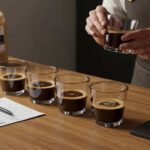
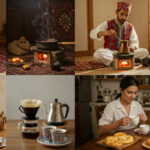





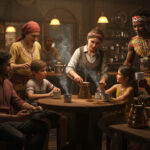




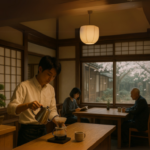




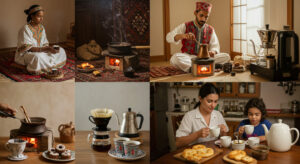



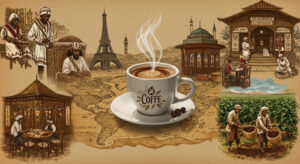

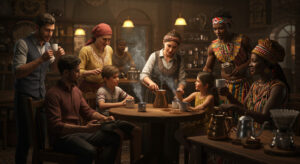


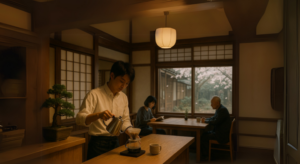
Post Comment